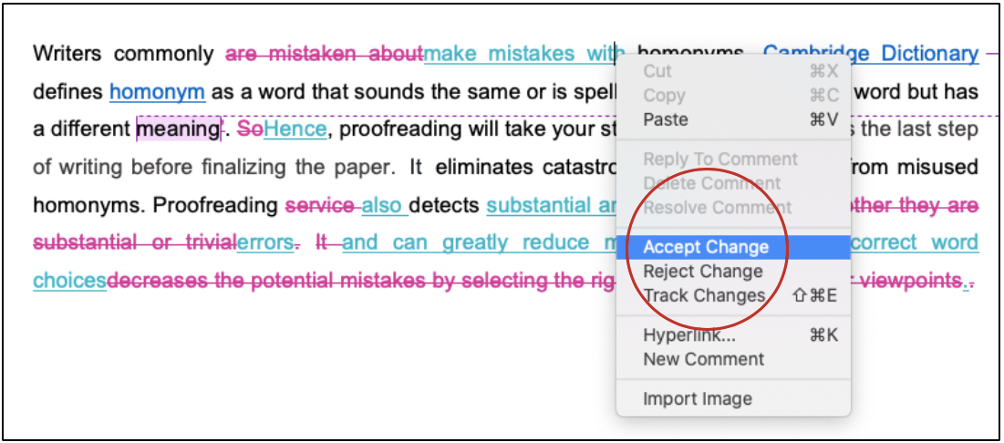After gathering and analyzing your data, next is penning the results. You report the primary findings of your study in this section. The most critical issue is that reporting your results must be concise and pursue a logical order.

After gathering and analyzing your data, next is penning the results. You report the primary findings of your study in this section. The most critical issue is that reporting your results must be concise and pursue a logical order. Using tables and graphs helps depict specific findings you have discovered. What is risky is including subjective interpretations of your findings or what they imply. Thus, your assessment should come later in the discussion section.
Although it depends on your field of study, you may not have a separate results chapter. Some qualitative research may have the results incorporated into the discussion. However, reporting the results before elaborating on their meaning is critical should you conduct empirical research. Then, the reader can have an explicit idea of what you found, allowing you to keep the data separate instead of your interpretation.
Concerning the tense use, the results should be in the past tense. The amount of data gathered and analyzed will determine this chapter’s length. Nevertheless, you should write this part as concisely as possible. Thus, only relevant results addressing your research questions must be in this section.
Editing and proofreading your results section is heavily relevant. A professional editing and proofreading service with trained and experienced experts with Ph.D. in their fields will edit your results by paying great attention to detail. Their suggestions will ensure that you have a flowing and concise “results” section.
You must deal with statistical analysis results when you conduct quantitative research. Reporting descriptive statistics, including means, proportions, and the variability of your data, is appropriate. You must also report statistical test results employed to contrast groups or evaluate the relationship between variables. Irrespective of the case, you must depict whether you support or refute your hypotheses. Therefore, the most reasonable way to design quantitative results includes establishing them around your research questions or hypotheses. You must present the procedures, such as ANOVA, t-test, and regression for each question or hypothesis, with a detailed description in the methods section. Moreover, this section contains a summary of descriptive statistics such as means and standard deviations and inferential ones such as t-scores, degrees of freedom, and p-values. It may also help include a statement on how the results relate and whether the hypotheses are supported.
Please do not ignore that the way you report your statistics also depends on the style guide you pursue. For instance, APA 7 has specific rules for registering your statistical results. Should you be unsure, read the results sections of other papers to understand better what you should include. You must ensure that you have reported both positive and negative results. Suppose you have results not meeting your expectations and assumptions. Still, you must include them without speculating on their meaning and ramifications. The usual place for comments and consequences is either discussion or conclusion section. Presenting raw data in your results chapter is inappropriate. If needed, cover them in Appendix.
The results may not relate to specific hypotheses in qualitative research. Hence, it would be best if you structured your results section around critical themes or topics from your data analysis. Each theme requires general observations about the data depicted. For instance, recurring points of agreement or disagreement, patterns and trends, and individual responses to your research question may be the most relevant. Direct quotations help clarify these points and disclose relevant demographic information about participants.
Visual elements such as graphs, charts, and tables in quantitative research are beneficial if they mirror your results and offer value for the reader.
Tables communicate precise values, providing a brief synopsis of your results.
Graphs and charts depict trends and relationships, illustrating the most critical parts of your findings.
Referring to all tables and figures in the text is necessary. However, you must not repeat information. The text should epitomize or accentuate particular aspects of your tables and figures. Thus, it should be beyond not just re-stating the exact numbers you have already covered. More importantly, it would be best to give clear, descriptive titles and labels to your tables and figures. Only then can the reader readily comprehend what is illustrated.
The results chapter must report the findings with brief observations concerning each question, hypothesis, or theme. Their usual place is the discussion section, where you are expected to interpret the results in detail and suggest their implications. Addressing the main research question or elaborating on the meaning of the results is inappropriate. It would be best if you avoided subjective and interpretive words, such as “appears,” “tends to,” or “implies.”
The “Conclusion” section allows you to present your interpretation of the results to address your main research question. Although the conclusion is sometimes combined with the discussion, it usually is a separate chapter at the very end.
Best Edit & Proof expert editors and proofreaders focus on offering papers with proper tone, content, and style of academic writing, and also provide an upscale editing and proofreading service for you. If you consider our pieces of advice, you will witness a notable increase in the chance for your research manuscript to be accepted by the publishers. We work together as an academic writing style guide by bestowing subject-area editing and proofreading around several categorized writing styles. With the group of our expert editors, you will always find us all set to help you identify the tone and style that your manuscript needs to get a nod from the publishers.

You can also avail of our assistance if you are looking for editors who can format your manuscript, or just check on the particular styles for the formatting task as per the guidelines provided to you, e.g., APA, MLA, or Chicago/Turabian styles. Best Edit & Proof editors and proofreaders provide all sorts of academic writing help, including editing and proofreading services, using our user-friendly website, and a streamlined ordering process.
Visit our order page if you want our subject-area editors or language experts to work on your manuscript to improve its tone and style and give it a perfect academic tone and style through proper editing and proofreading. The process of submitting a paper is very easy and quick. Click here to find out how it works.
Our pricing is based on the type of service you avail of here, be it editing or proofreading. We charge on the basis of the word count of your manuscript that you submit for editing and proofreading and the turnaround time it takes to get it done. If you want to get an instant price quote for your project, copy and paste your document or enter your word count into our pricing calculator.
Contact us to get support with academic editing and proofreading. We have a 24/7 active live chat mode to offer you direct support along with qualified editors to refine and furbish your manuscript.
Follow us on Twitter, LinkedIn, Facebook, Instagram, and Medium.
For more posts, click here.
This article explains how to report a research results in a dissertation and thesis. To give you an opportunity to practice proofreading, we have left a few spelling, punctuation, or grammatical errors in the text. See if you can spot them! If you spot the errors correctly, you will be entitled to a 10% discount.
How to Determine Variability in a Dataset
14.10.2023
Population vs Sample | Sampling Methods for a Dissertation
14.01.2023
7 Issues to Avoid That may Dent the Quality of Thesis Writing
18.12.2022
How to Ensure the Quality of Academic Writing in a Thesis and Dissertation?
04.12.2022
How to Define Population and Sample in a Dissertation?
03.12.2022
How can You Establish Experimental Design in Your Dissertation?
12.11.2022
How Can You Decide on Tense Usage in Your Dissertation?
04.11.2022
How Can You Write an Abstract for Your Dissertation?
30.10.2022
How to Build Research Methods for Your Dissertation
14.10.2022
How to Build a Strong Hypothesis for Your Dissertation
13.10.2022

A dissertation defense is one of the critical milestones one needs to cross to obtain a doctoral degree. It is a process that helps a candidate proffer their research knowledge to an audience of accomplished academics. Thus, preparing to defend a dissertation can feel distressing and burdensome, for one needs to tick several checkboxes at once. But, with the right set of steps and adequate practice, candidates can successfully overcome this unease.
Continue Reading
Researchers develop theories to explain phenomena, build connections, and make educated guesses. Therefore, you illustrate the existing ideas supporting your dissertation or thesis in a theoretical framework, depicting that your work has a solid foundation.
Continue Reading
While researching a group of people, collecting data from every person in that group is virtually impossible. To counter this issue, you choose a sample. What is the difference between population and sample? What sampling methods should you use in your dissertation?
Continue Reading